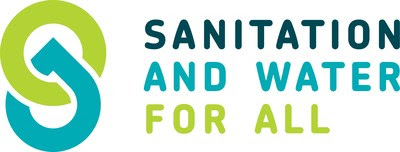The United States Department of Energy on Tuesday is expected to announce that its scientists have been able to engineer a nuclear fusion reaction that produced more energy than it consumed, a landmark achievement in a decadeslong search for a way to generate clean and waste-free nuclear power.
The pending announcement, first reported by the Financial Times and subsequently confirmed by other media organizations, will identify the National Ignition Facility (NIF) at the Lawrence Livermore National Laboratory in California as the site of the experiment.
On Monday, the department announced that Energy Secretary Jennifer Granholm would announce “a major scientific breakthrough” at a news conference Tuesday.
The announcement comes at a time when the Biden administration has directed renewed effort and funding to the development of clean power generation, with a particular emphasis on fusion energy. The recently passed Inflation Reduction Act contained significant funding for research in the field.
Just because scientists have been able to engineer an energy-positive fusion reaction does not mean that any meaningful changes to the way humans generate power are on the horizon. Experts said that while the work is important, daunting technological barriers remain in the way of systems that could deploy fusion energy at scale.
A long journey
Scientists have long known that when two atoms are fused together to form a new element, large amounts of energy are released. The sun, for example, is essentially an enormous fusion reactor in which superheated particles come together with tremendous force, forming new particles and releasing excess energy as heat.
As long ago as the 1940s, scientists began experimenting with fusion reactors. While they have long been able to generate fusion reactions, until now, those reactions have always required inputs of energy that exceeded the amount they ultimately produced.
The reason a net-positive fusion reaction has been so elusive is in large part because scientists have to generate extreme conditions in the laboratory in order to make the reactions occur. Typically, enormous lasers are used to heat isotopes of hydrogen to temperatures in the millions of degrees Celsius. The resulting plasma is then confined under extremely high pressure, causing the isotopes to come together with enough force that they fuse into a different element, releasing energy as heat when they do.
An important element of the announcement on Tuesday will be the way in which the government defines a “net positive” energy result. Typically, that means that the reaction being measured produced more energy than the laser beams directed at the hydrogen. However, the lasers used in the experiment are far from perfectly efficient, meaning that it takes more energy to power them than they ultimately bring to bear on their targets.
For a fusion reaction to be “net positive” in the sense of generating more energy than the total energy put into the experiment — including waste — the reaction would have to produce substantially more energy than that consumed by the laser beams directed at the hydrogen.
Enormous engineering challenges
Maintaining equipment that can tolerate such extreme temperatures is extraordinarily difficult, and finding a way to create reactors that can tolerate the stresses involved in the process for long periods of time is one of the many challenges facing researchers in the field.
Ian H. Hutchinson, a professor of nuclear science and engineering at Massachusetts Institute of Technology said that it was important not to read too much into preliminary reports, noting that prior to the official announcement few details of what, precisely, the scientists at the NIF have achieved was known.
“It seems an important scientific confirmation of inertial fusion ignition, but I would hesitate to call it a ‘breakthrough,’” Hutchinson said in an email exchange with VOA. “The NIF program is not aimed at fusion energy production but at understanding fusion explosions. Useful energy production from miniature fusion explosions still faces enormous engineering challenges, and we don’t know if those challenges can be overcome.”
The NIF is most closely associated with the United States’ nuclear weapons program, and its primary purpose is to recreate nuclear explosions on a small and controllable scale, allowing for the maintenance of the country’s nuclear arsenal without the need for destructive full-scale testing.
Benefits of fusion
There are several reasons why scientists have spent so many years in search of a means of making fusion reactors viable sources of energy.
If fusion reactors were to replace fossil fuels as an energy source, it would dramatically reduce the amount of carbon released into the atmosphere, reducing one source of global warming.
Unlike fission reactors, which use highly enriched radioactive materials like uranium and plutonium as fuel, fusion reactors can theoretically be fueled by hydrogen, the most abundant element in the universe, meaning that the fuel supply for a fusion reactor is essentially infinite.
Also, unlike fission reactors, fusion reactors do not produce highly radioactive waste, eliminating the need to safely store materials that will continue to be dangerous, in some cases, for thousands of years.
Finally, despite the extreme conditions under which fusion occurs, fusion reactors are considered to be safer to operate than fission reactors, which must be constantly monitored in order to avoid conditions leading to destabilization and explosion. In the two worst nuclear disasters in history, explosions at nuclear facilities at Chernobyl in the Soviet Union in 1986 and at Fukushima in Japan in 2011 forced the evacuation of thousands of people and rendered vast expanses of both countries uninhabitable.
Source: Voice of America


